| Article ID | Journal | Published Year | Pages | File Type |
|---|---|---|---|---|
| 3877782 | The Journal of Urology | 2005 | 5 Pages |
ABSTRACTPurpose:In older adults detrusor overactivity (DO) is almost as common in continent individuals as in those with urge incontinence (UUI). Thus, UUI likely reflects the contribution of additional factors. We postulated that of functionally independent individuals in whom transient causes were excluded those in whom DO was accompanied by UUI would be more likely to have smaller functional bladder capacity, less warning and less ability to avert urine loss in the face of DO.Materials and Methods:While blinded to continence status, we reviewed the records of all 52 cognitively intact and nonobstructed volunteers older than 65 years who had DO associated with urgency during urodynamic testing and had been asked to try to prevent leakage for 2 minutes. Of these individuals 31 were continent at home.Results:In patients with UI mean functional bladder capacity ± SD was smaller (313 ± 153 vs 390 ± 178 ml, p = 0.06) and warning was briefer (87 ± 81 vs 120 ± 116 ml), although the association with warning was less impressive (p = 0.14). The ability to forestall leakage for at least 2 minutes correlated strongly with being continent at home (p <0.002). For continence detrusor suppression at the onset of DO was more important than sphincter contraction.Conclusions:Urge incontinence in older adults involves more than simply the presence of DO. Physical function, cognitive function and medications are already known to be important for continence. Our data suggest that functional bladder capacity and the ability to suppress involuntary contraction (and possibly warning) are also potentially important covariates. These factors may represent additional potential targets for behavioral and pharmacological therapy.
